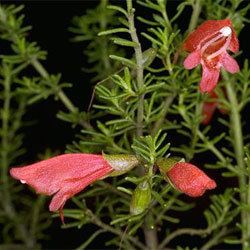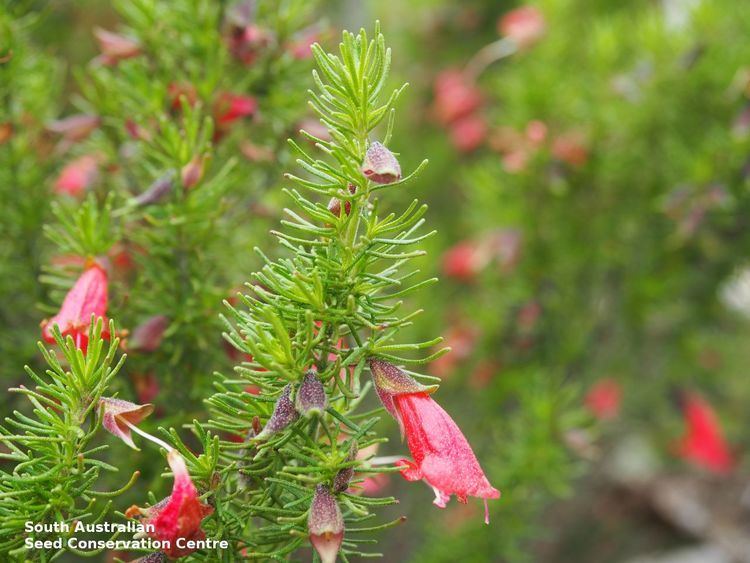Rank Species | ||
 | ||
Similar Euphorbia schinzii, Prostanthera calycina, Prostanthera denticulata, Prostanthera nivea, Prostanthera | ||
Prostanthera aspalathoides, commonly known as scarlet mint-bush, is a shrub that is native to south-eastern Australia It has a compact habit, growing to between 0.3 and 1 metre high. The aromatic leaves are terete to linear-elliptic in shape and are 1.5 to 6 mm long and 0.5 to 1 mm wide. Flowers occur throughout the year, but are most profuse in late spring. These are solitary and axillary, forming a tube that is 8 to 11 mm long and may be coloured red, pink-red, orange or yellow.

The species was formally described by botanist Allan Cunningham in 1834 based on plant material collected in the vicinity of the Lachlan River in New South Wales It occurs in New South Wales and Victoria and South Australia. The specific epithet alludes to a similarity to plants of the genus Aspalathus.

Prosthanthera aspalthioides is best adapted to cultivation in dry conditions with low humidity. Plants prefer a position in full sun or partial shade with good drainage and withstand moderate frost.

Cuttings are the preferred propagation method, as seed germinates slowly. Plants may also be grafted on roostocks of the hardier species Prostanthera nivea.

